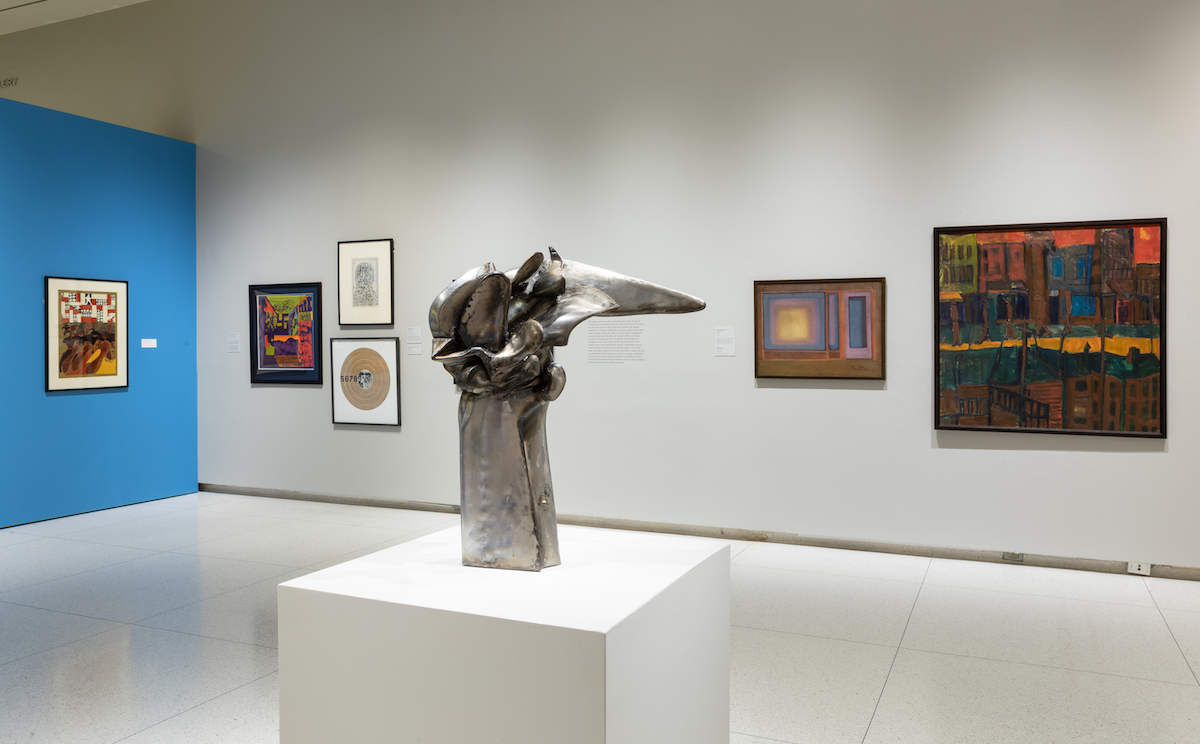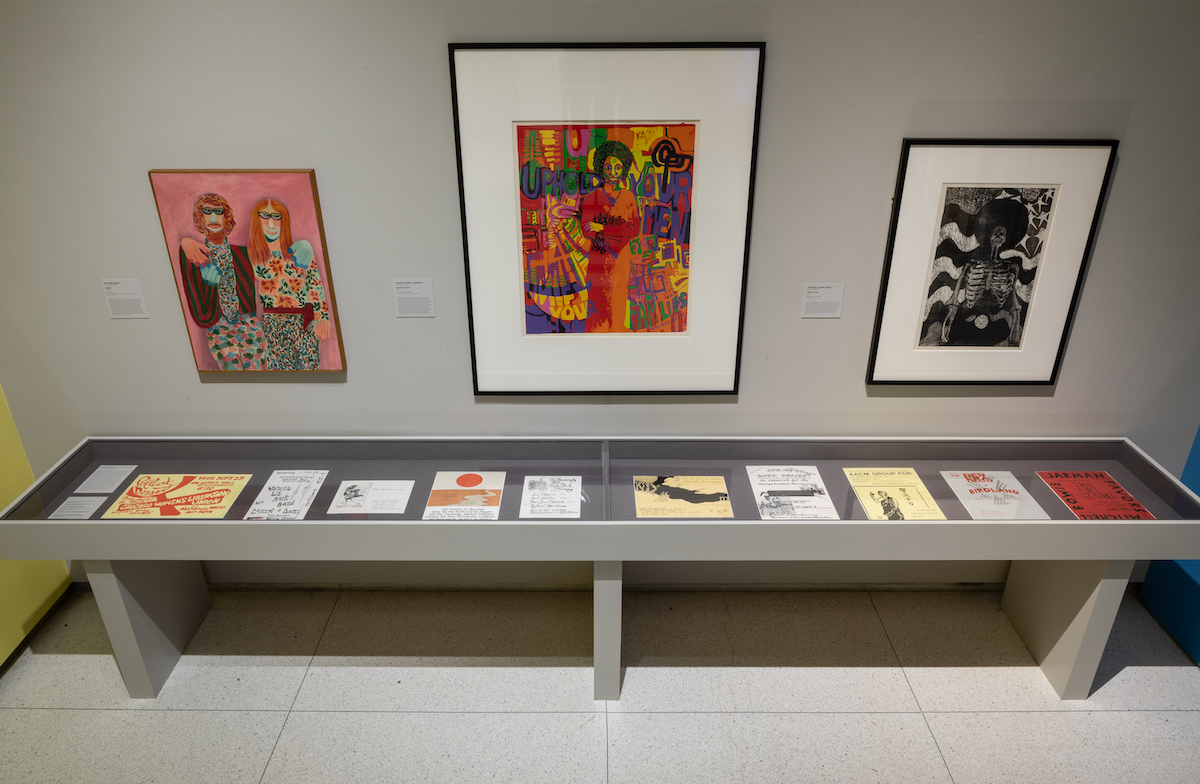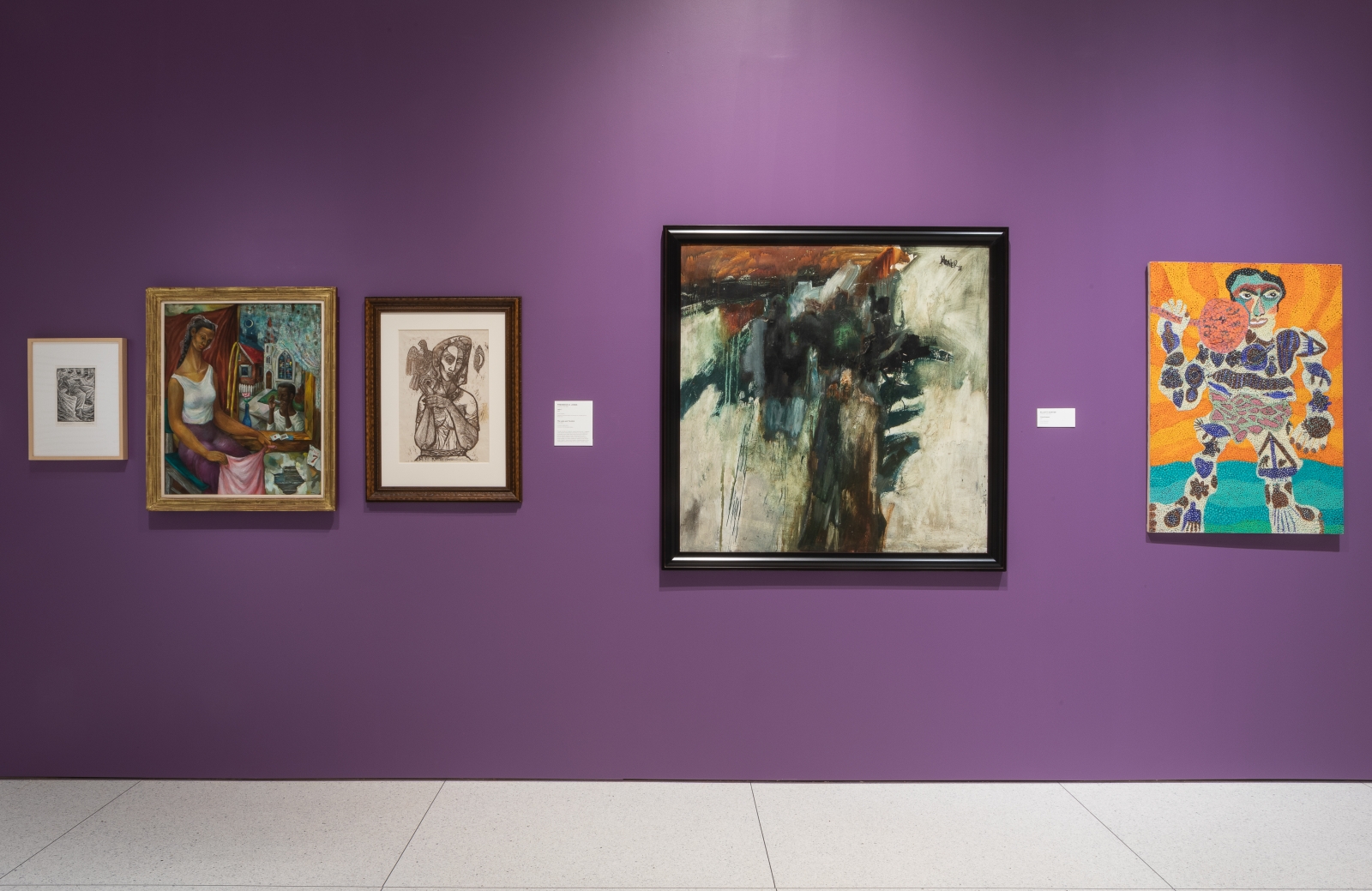Over two decades, an inconspicuous alley on Chicago’s South Side served as a community gathering place where the visual and performing arts came together. “Universal Alley” was inaugurated in 1970 with the creation of a mural by Mitchell Caton and C. Siddha Sila Webber and became a hangout spot for the hip and stylish of the neighborhood. There were dance parties where there once were “kids shooting each other, and dice and drugs and stuff like that,” according to Webber.
Spaces like “Universal Alley” (which came to be known as “the Alley”), including the South Side Community Arts Center, the Hyde Park Art Center, the Osun Art Center, and the Organization of Black American Culture's writers workshop are part of a rich history on display at the University of Chicago’s Smart Museum of Art.
The Time is Now! Art Worlds of Chicago’s South Side 1960–1980, featuring more than 70 artists, relays an important message about a history of cultural wealth in the South Side at odds with the image of the city’s segregated neighborhoods. Serving as an archive of sorts, the show is an important reminder of a flourishing black community, lest we forget pieces of the past amid the pervasive narrative in the news of violence and poverty in these areas.
Young Chicagoans in particular should see The Time is Now! because these histories may seem far away if you were born in the 2000s. The show exemplifies how the foundations of Chicago’s Black Renaissance led to a cultural awakening to the beauty of black culture in the Civil Rights Era and beyond. The legacy of this movement is evident in the rise of newer South Side projects like Theaster Gates’s Rebuild Foundation and Stony Island Arts Bank.

The Chicago artists most credited with defining the city’s art scene in the ‘60s and ‘70s are perhaps the Chicago Imagists, some of whom are included in The Time is Now! But back then, black artists like Richard Hunt and Ralph Arnold were also beginning to be shown at and represented by major galleries. The art market was still dominated by white artists, but groups like AfriCOBRA sought to avoid consumer culture, says The Time is Now! curator Rebecca Zorach.
Instead, black artists — many of whom held day jobs in factories or steel mills — created publications and small community spaces that they never intended to make marketable. Among them were Gerald Williams, Barbara Jones-Hogu, Dorothy Carter, and AfriCOBRA, who were all creating images as activism, especially as a way to reconsider the black body in the popular imagination.
“A lot of these artists believed in a black aesthetic that was performative and ran counter to traditional distinctions in Western art,” says Zorach.
Exemplifying this idea are works that center on the outcry of black women to be heard and seen in this country at a time when they were nearly invisible in pop culture. Paintings by Williams that were turned into posters urge viewers to "wake up” and “unite to liberate our nation.” A 1968 screenprint by Jones-Hogu reads, “Resist law and order in a sick society.”

The Time is Now! shows a community of artists who supported and closely collaborated with one another. In many cases, they defy the categories of painter, performer, or writer. They created unique spaces of collective expression like the Alley, which transformed from a downtrodden and dangerous passageway into a lively site of weekly gatherings. These drew characters like Daniel “Sandman” Pope, who created costumes and multi-instrumental performances with found materials — experimental, nearly mystical, experiences reminiscent of the work of Sun Ra (who lived in Chicago in the 1950s — the defining period of his life, when he became the eccentric performer of science fiction and Afrofuturism).
During the show’s opening, artist Douglas Ewart led a band of two dozen international instrumentalists playing Japanese drums, electric guitars, djembes, and horns. They were accompanied by dancers, creating a cacophony of sound and color as explosive and energetic as the exhibition itself.
I was especially struck by a vibrant painting by Bertrand "Bert" D. Phillips, Dexterity (1980), which challenges typical depictions of black bodies through illustrative abstraction; it's an artwork that was ahead of it’s time. Elliot Hunter’s Grasshopper (1967) and Black Depression (1967) are two more highlights. They are moving abstract paintings amid a sea of figurative works by an artist who was hardly known or shown outside of his small community. It is only on display here thanks to the generosity of the late painter's family.

DIY projects like the Alley were accessible means of disseminating information and building social capital during integration. The city’s racial segregation also meant the historic segregation of knowledge, says Zorach.
She adds that the University of Chicago, including the Smart Museum of Art, serves as a symbolic barrier between downtown and the South Side. The beautiful campus and its surrounding blocks can feel distant from the violence and poverty just a mile or two away. The university has been a major force behind the ongoing gentrification and development of Hyde Park, a historically black neighborhood.
One could read the show as a discrete, in-situ statement against turning a blind eye to this. “I was interested in making my students aware of what was happening in South Chicago,” says Zorach, who previously taught at the university. (In 2013, she also curated a show about AfriCOBRA at the Reva and David Logan Center for the Arts.)
“There’s a lot that was right under the surface,” she says. “A lot of things were in motion during this time.”
I don’t think many of the artists represented in the exhibition could have predicted how their work would resonate to this day. Though they weren’t necessarily interested in being political, their artworks and projects are still part of a complicated narrative of black America and Chicago. As we go about our lives, we might have little time or energy to reflect on the past. But revisiting projects that helped create our communities helps us better understand where we are today.
The Time is Now! Art Worlds of Chicago’s South Side 1960–1980 runs through December 30.


